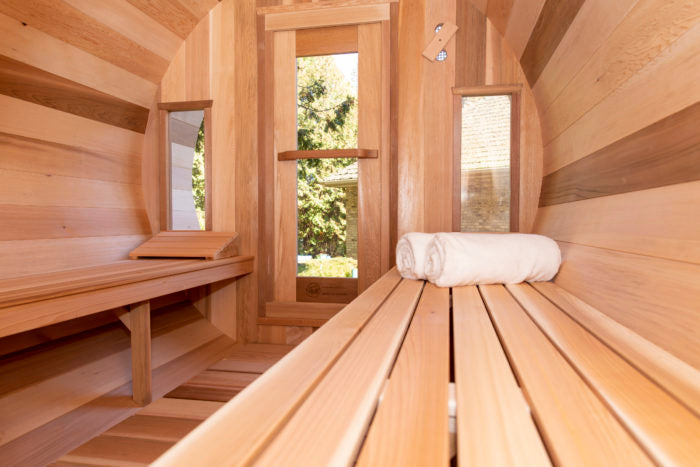The Ultimate Guide To Traditional Sauna
The Ultimate Guide To Traditional Sauna
Blog Article
A Biased View of Traditional Sauna
Table of ContentsIndicators on Traditional Sauna You Should KnowSome Known Facts About Traditional Sauna.How Traditional Sauna can Save You Time, Stress, and Money.The Ultimate Guide To Traditional SaunaLittle Known Facts About Traditional Sauna.
The majority of the weight shed in a sauna is water loss and is re-gained upon rehydrating. However, undoubtedly sauna can be an integral part of a healthy and balanced fat burning program. To check out the differences between typical and IR saunas, I will separate these into verifiable, theoretical, and made distinctions.Thus, the hottest point in the saunawhich goes to the ceiling straight above the sauna heateris usually between 185 and 190 F. Claims that a standard sauna surpasses 200 F is just not real and not suitable for electrical saunas marketed in the United States. The temperature level for a far-infrared sauna is usually established between 120 and 140 F; nonetheless, unlike the traditional sauna, the objective in and IR area is not to achieve a heat.
Since of this, the temperature difference is nearly unimportant, because profuse sweating causes both sauna kinds, however the technique of warming the body is different. In an IR sauna the bather will certainly feel warm and will certainly sweat a lot, yet at much reduced temperature levels (Traditional Sauna). Thus, if the objective is to invest longer time periods in the sauna, the IR sauna is an excellent choice
When a typical sauna has been effectively heated, the sauna wall surfaces are cozy, the air temperature has achieved set temperature and the rocks are very warmed. As an interesting side note, the warmed wall surfaces and the rocks are sending out far-infrared warm, integrated with the heated air, to create an "wrapping up warm".
Fascination About Traditional Sauna

When the heat is accomplished, the elements cycle on and off to keep the heat. The majority of conventional sauna users appreciate pouring water over the rocks to develop heavy steam to raise sauna moisture degrees. The advantages of putting water over the rocks consist of: making the room more comfy, moistening the nasal passages, and permitting the usage of aromatherapy by mixing important oils with the water.

When the energy gets in the body, it causes the body temperature to enhance and eventually causes sweating. In an infrared sauna it is necessary for the emitters/heaters to continue to be on almost regularly. Because there is no mass of rocks to retain heat, the sauna will cool down if the emitters closed off.
As discussed over, the sauna bather in an infrared room intends to position himself in front of running emitters to obtain optimal gain from the warmth. The home heating time for both rooms can be really different, relying on how the rooms are utilized. For a standard sauna, a bather should enable 30-40 minutes for the room to accomplish a desired temperature level and to correctly pre-heat the rocks.
Not known Details About Traditional Sauna
A well built sauna will typically accomplish a temperature of 150-160 F in regarding 30-40 minutes. For hotter temperature levels, the area may need to warmth for a longer duration.

Typical try this saunas often tend to be larger (therefore utilize more electrical energy) than infrared saunas, although traditional saunas are definitely readily available in one and two person dimensions. For a two-person traditional sauna, 5x6 or 5x7 dimension is most preferred. The leading bench can easily seat two or three people and is likewise long enough to relax throughout the sauna session.
Some Known Factual Statements About Traditional Sauna
The average price per kWH of electrical power in the U.S. is about $0.11, so a 4.5 kW heating unit will set you back approximately $.50 to run for one hour, if the heater runs continually for one hour. Generally a sauna heating system will certainly run for 75% of the first hour and 50% of subsequent hours on since the elements cycle once the established temperature level is accomplished.

There is a hardly ever reviewed difference in the social experience in between the 2 areas. While our culture has actually lost a few of the social advantage of the standard sauna experience, it can be extremely socially rewarding (Traditional Sauna). From household time in the sauna, to heart-felt discussions with better halves, to sauna partiesthe traditional sauna experience can cause intimate socializing
Some Known Incorrect Statements About Traditional Sauna
Most greater he said end infrared areas consist of colored light therapy, audio systems and full-glass fronts.
Report this page